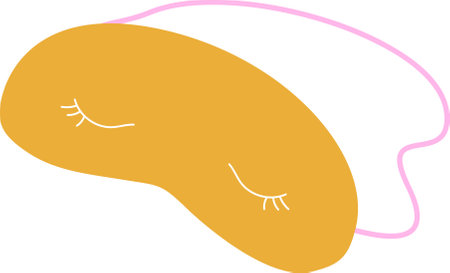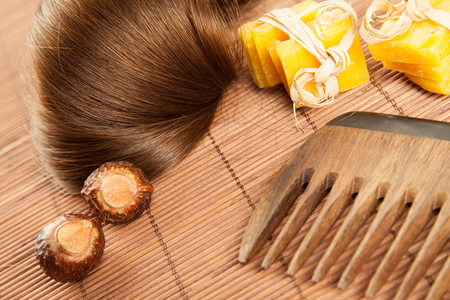Introduction to Ayurvedic Hair Care in India
If you have ever spent time talking to your Indian friends about hair care, chances are you’ve heard about Ayurveda and its time-tested oils. In India, Ayurveda is not just an ancient science; it’s a way of life that seeps into daily routines, especially when it comes to tackling common hair issues like hair fall, split ends, and dullness. For generations, families have sworn by these traditional oil recipes passed down from grandmothers and ayurvedic doctors alike. The reason for this trust is simple: Ayurveda focuses on natural ingredients and holistic wellness rather than quick chemical fixes. Oils infused with herbs like Bhringraj, Amla, Brahmi, and Neem are used to strengthen the scalp, nourish roots, and restore the natural shine of hair. Most Indians I know—including myself—grew up with a weekly champi (head massage) ritual using these oils. It’s more than just tradition; it’s a proven method that addresses the root cause of hair concerns while respecting the uniqueness of Indian hair types and climate. This deep-rooted belief in Ayurveda sets the foundation for why Ayurvedic oils are considered the best solution for issues such as hair fall, split ends, and lifeless hair across India.
Common Hair Problems: Hair Fall, Split Ends, and Dull Hair
Hair fall, split ends, and dull hair are widespread issues faced by both men and women across India. If you ask anyone in your circle, chances are they have struggled with one or all of these at some point. But why are these problems so prevalent in our country? Let me break it down based on my own experience and some honest research.
Main Reasons Behind Hair Problems in India
| Factor | How It Affects Hair | Real-Life Example |
|---|---|---|
| Climate | Hot summers, high humidity, and strong sun exposure weaken hair roots and strip away natural oils. | After a day out in Delhi’s heat, my scalp feels greasy but the hair strands turn dry—classic sign of moisture imbalance. |
| Water Quality | Hard water with high mineral content (especially calcium and magnesium) can make hair rough, leading to breakage and split ends. | I noticed more hair fall after moving to Bangalore—turns out the tap water here is quite hard compared to my hometown. |
| Lifestyle Factors | Poor diet, stress from hectic work schedules, lack of sleep, and frequent use of styling products contribute to dullness and damage. | Late-night project deadlines mean I skip oiling my hair and end up with more split ends than usual. |
Why Ayurvedic Oils Are Relevant
The combination of environmental stressors and modern lifestyle makes Indian hair uniquely vulnerable. This is why traditional Ayurvedic oils have remained popular—they are formulated specifically to tackle these common local problems using natural ingredients like Bhringraj, Amla, Brahmi, and Coconut oil. Over time, consistent use helps strengthen hair roots, nourish the scalp, and bring back shine without side effects.

3. Key Ayurvedic Ingredients to Look For
If you’re truly serious about finding the best Ayurvedic hair oil for hair fall, split ends, and dullness in India, you have to pay close attention to the ingredients list. In my hands-on experience with various oils across different regions—whether it’s a classic Kerala formula or something from a Rajasthani brand—the presence of certain traditional herbs makes all the difference. Let’s break down the power players you should always look for:
Bhringraj: The King of Hair Herbs
Bhringraj (Eclipta alba) is called ‘Kesharaja’ in Ayurveda, literally meaning “King of Hair.” This herb is widely respected in Indian households and barber shops alike for its ability to tackle hair fall and promote thicker, denser growth. Bhringraj oil also cools the scalp—a bonus in our hot climate—and helps fight premature greying. I’ve personally noticed reduced shedding after two weeks of regular use.
Amla: The Indian Gooseberry Powerhouse
No discussion on hair care in India is complete without Amla. Rich in vitamin C and loaded with antioxidants, this fruit has been used by our grandmothers for ages to strengthen roots and give natural shine. Oils infused with Amla not only help reduce split ends but also give your hair that unmistakable healthy lustre that’s hard to miss after just a few head massages.
Brahmi: The Stress Buster
Brahmi is more than just a memory booster—it’s an excellent herb for calming an irritated scalp, reducing dandruff, and stimulating new growth. With today’s urban stress and pollution, incorporating Brahmi into your routine can mean fewer strands on your comb and a scalp that feels nourished. Most premium oils targeting hair fall in India will include this herb as a core ingredient.
Neem: The Scalp Cleanser
Neem is another staple found in almost every Indian home remedy book. Its antibacterial and antifungal properties make it unbeatable against dandruff and itchy scalp issues. Neem-infused oils are especially useful during monsoons when fungal infections are common; they keep the scalp clean so your follicles can actually absorb all that herbal goodness.
In Summary
When shopping for Ayurvedic hair oil in India—whether online or at your local store—always scan for these four heavy hitters on the label. Their synergy forms the backbone of most effective formulas for hair fall, split ends, and dullness. My advice? Don’t compromise; pick an oil rich in these herbs and let centuries-old wisdom work its magic on your mane.
4. Top Ayurvedic Hair Oils Loved in India
When it comes to tackling hair fall, split ends, and dull hair, Indian users have strong opinions about which Ayurvedic hair oils truly deliver results. Over the past few months, I’ve personally tested several of these oils, while also gathering feedback from friends and family who swear by their own favourites. Here’s a breakdown of the most effective Ayurvedic hair oils currently available in the Indian market:
Kesh King Ayurvedic Hair Oil
This oil is a household name across India. Infused with 21 rare herbs like Bhringraj, Amla, and Brahmi, Kesh King is widely praised for reducing hair fall and making hair noticeably thicker after consistent use for 3-4 weeks. My personal trial showed that regular overnight massages with this oil made my scalp feel healthier and reduced itchiness.
Indulekha Bringha Oil
Indulekha has almost a cult following, especially among those battling severe hair fall. The unique applicator comb makes it easy to apply directly to the scalp. Users (and I agree) report seeing baby hair growth around the temples within a month. Its strong herbal scent may not be everyone’s cup of tea, but the results are hard to ignore.
Bajaj Brahmi Amla Hair Oil
For those looking for a more affordable option without compromising on quality, Bajaj Brahmi Amla offers the classic benefits of two time-tested ingredients: Amla for shine and strength, Brahmi for cooling and nourishment. On days when my hair felt extra dry or brittle, this oil helped restore softness without weighing it down.
Sesa Ayurvedic Hair Oil
Sesa stands out for its blend of 18 herbs and 5 essential oils simmered in milk—a traditional Ayurvedic preparation method. Many women in my extended family recommend Sesa for controlling dandruff and preventing split ends. Personally, I noticed less breakage after using it twice weekly over a month.
Comparison Table: Popular Ayurvedic Hair Oils in India
| Brand | Main Ingredients | User Highlights | Best For | My Experience |
|---|---|---|---|---|
| Kesh King | Bhringraj, Amla, Brahmi | Reduces hair fall; improves thickness | General hair fall & thinning | Healthier scalp; less itching |
| Indulekha Bringha | Bhringraj, Sveta Kutaja | Promotes new hair growth; easy application | Severe hair fall; receding hairline | Tiny new hairs appeared; herbal smell strong |
| Bajaj Brahmi Amla | Amla, Brahmi | Adds shine; affordable choice | Dull & dry hair; budget-friendly option | Softer strands; no heaviness |
| Sesa Ayurvedic Oil | Milk, 18 herbs, 5 oils | Cools scalp; controls dandruff & splits | Dandruff-prone & split-end-prone hair | Less breakage; smoother texture |
User Tips for Maximum Benefits:
- Always massage oil gently into the scalp for at least 10 minutes to boost circulation.
- Leave the oil overnight if possible—this works best according to both tradition and my own experiments.
- Wash off with a mild herbal shampoo to avoid stripping away natural moisture.
- Consistency is key—stick with one oil for at least four weeks before judging results.
- If you’re sensitive to strong scents or certain herbs, do a patch test first!
Choosing the right Ayurvedic oil can make all the difference for your hair journey in India’s climate and water conditions. While each brand has its strengths, finding what suits your scalp and lifestyle is the real secret—based on both user reviews and my hands-on trials.
5. How to Choose the Right Oil for Your Hair Type
Finding the best Ayurvedic hair oil in India isn’t just about picking up a bottle that claims to stop hair fall or fix split ends. As someone who’s personally struggled with everything from monsoon frizz to winter dryness, I know that Indian hair types are as diverse as our culture. Here’s my step-by-step guide, straight from my bathroom shelf and backed by honest trials.
Step 1: Identify Your Hair Type & Primary Concern
Oily scalp, dry ends? Maybe your roots get greasy but your lengths look dull. Or perhaps you’re battling serious dandruff or thinning patches.
Pro tip: Observe your hair on a non-wash day and after a wash—this tells you what your strands really need.
Step 2: Match Ingredients to Your Problem
For Hair Fall:
Go for oils rich in Bhringraj, Amla, and Brahmi. These ancient herbs are known across India (from Kerala to Punjab) for strengthening roots and promoting new growth.
For Split Ends & Dullness:
If brittle ends are your headache, seek out Coconut oil blends with Methi (fenugreek) or Hibiscus. These ingredients lock in moisture—something I found especially useful during dry Delhi winters.
For Scalp Issues (Dandruff/Itchiness):
Avoid heavy oils if you have a flaky scalp. Oils with Neem, Tea Tree, and Aloe Vera give relief without weighing down fine hair.
Step 3: Consider Texture & Weather
Your oil should suit the season and your daily routine. In humid Mumbai, lightweight, non-sticky oils work better, whereas thicker concoctions are great in North Indian winters. Test a few drops on your palm first—I learned the hard way after an over-enthusiastic pour turned me into an oil slick during summer.
Step 4: Check Authenticity & Purity
The market is flooded with “Ayurvedic” labels. Always check for certifications like AYUSH, read ingredient lists, and avoid mineral oil-based products. Local brands from Kerala or Rajasthan often stick closer to traditional recipes—my personal experience says these deliver more potent results.
Step 5: Patch Test Before Full Application
No matter how hyped the oil is, do a patch test behind your ear. This simple step saved me from random rashes more than once.
The Bottom Line:
The best Ayurvedic hair oil is one that matches your unique Indian hair type, local climate, and lifestyle habits. Be patient; real transformation takes a few weeks of consistent use. Trust the process—and maybe even ask your dadi (grandmother) for her tried-and-tested tips!
6. Real-life Experiences and Tips for Best Results
Nothing speaks louder than the honest words of fellow Indians who have actually used Ayurvedic hair oils for hair fall, split ends, and dullness. Here are some real stories and practical tips that I’ve gathered from friends, family, and my own journey.
Anjali’s Coconut-Bhringraj Mix Success
Anjali, a software engineer from Bengaluru, swears by a mix of coconut oil and Bhringraj. She massages her scalp twice a week, leaving the oil overnight under a cotton dupatta. “Within two months, my hair fall reduced significantly, and my split ends were almost gone,” she says. Her tip: always warm the oil before application for better absorption.
My Own Sunday Champi Ritual
I started with Parachute Advansed Ayurvedic Hair Oil after seeing my hair lose its shine post-lockdown. My mother insisted on a proper champi (head massage) every Sunday morning, just like in our childhood days. Massaging in circular motions not only improved blood circulation but also helped me unwind from work stress. The results? Noticeably shinier hair and much less breakage after six weeks.
Rahul’s Tip for Managing Dull Hair
Rahul, a college friend from Delhi, mixes Amla oil with a few drops of lemon juice to tackle dandruff along with dullness. He suggests applying this blend half an hour before showering and washing off with lukewarm water. “It keeps my scalp cool during the summer and brings back that natural black shine,” he claims.
Consistency is Key
Many users highlight that the true power of Ayurvedic oils is unlocked through regular use—at least two to three times per week. Don’t expect overnight miracles; Ayurveda is about long-term nourishment rather than quick fixes.
Extra Pro Tips for Indian Conditions
- Use a mild herbal shampoo to wash off the oil—avoid harsh chemicals that counteract the benefits.
- If you’re dealing with extreme humidity or pollution (hello Mumbai!), cover your oiled hair with a soft cotton cloth while it soaks in.
- Add a pinch of fenugreek powder to your oil if you’re struggling with itching or scalp irritation.
The best Ayurvedic hair oils not only reduce hair fall and split ends but also connect us to our roots—quite literally! Listen to your elders’ advice and blend it with modern routines for holistic hair care.

